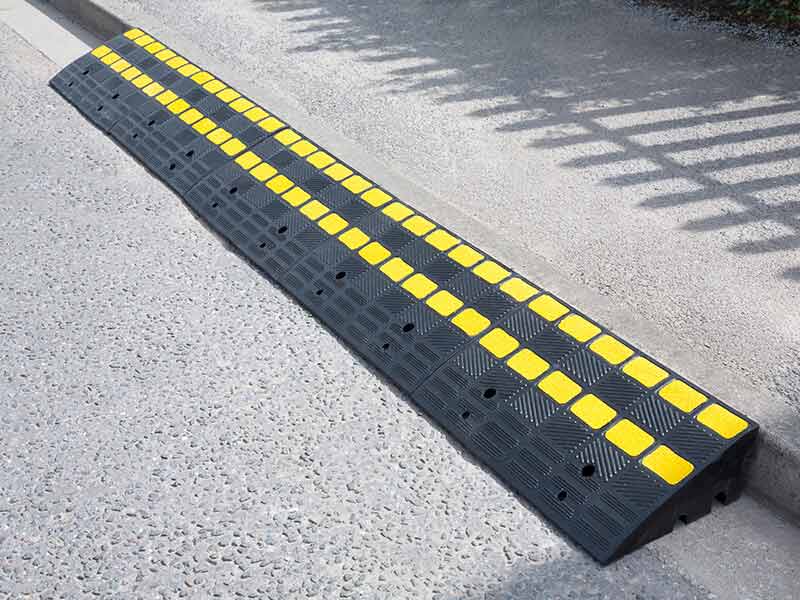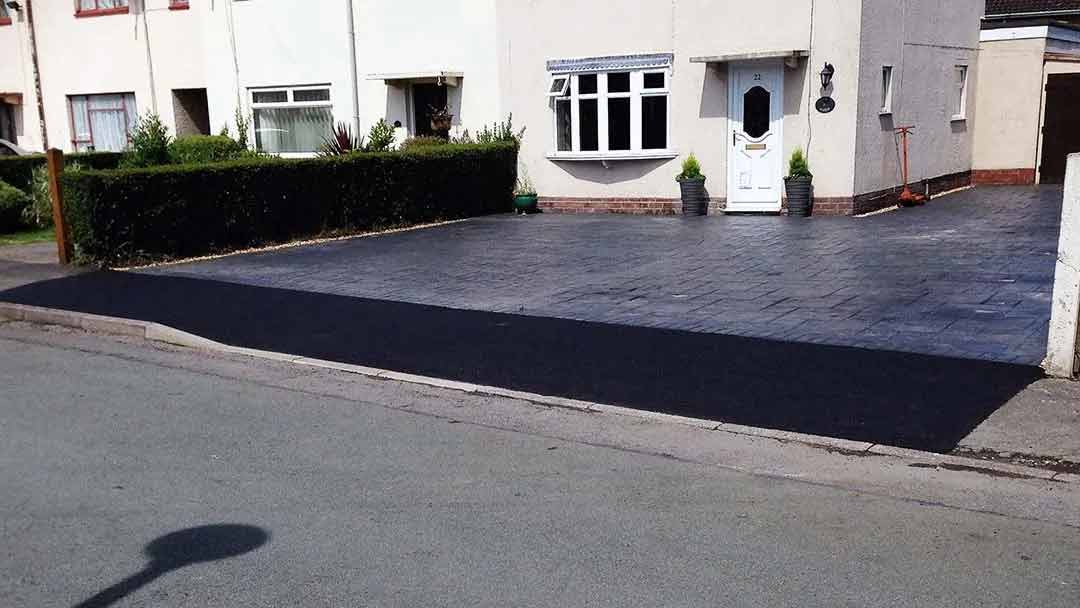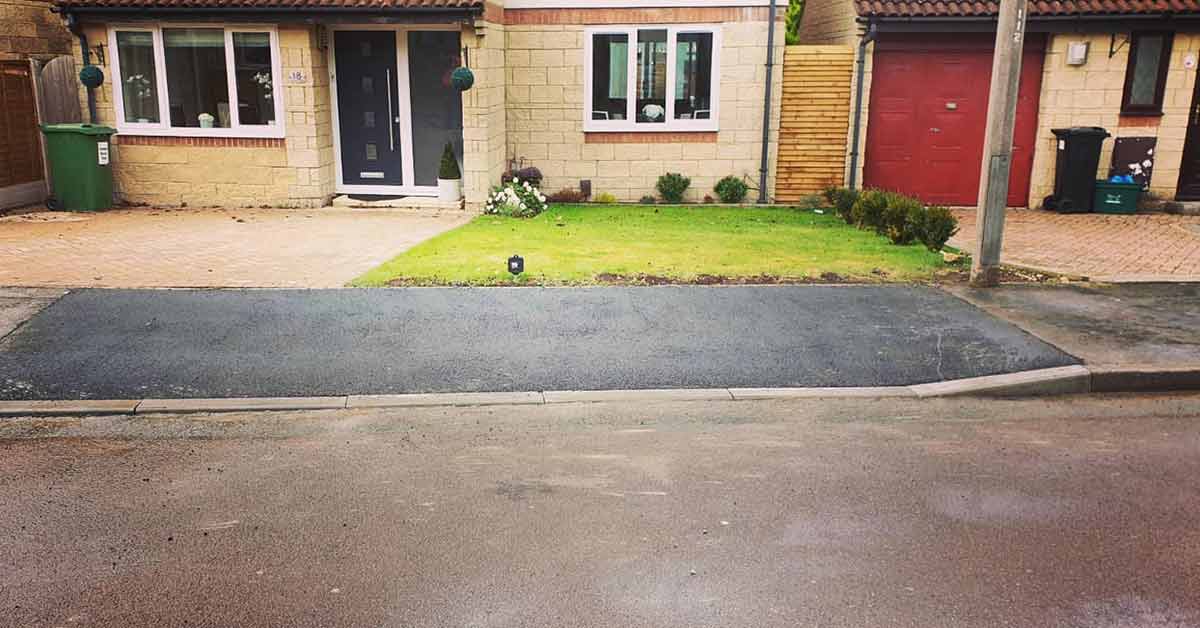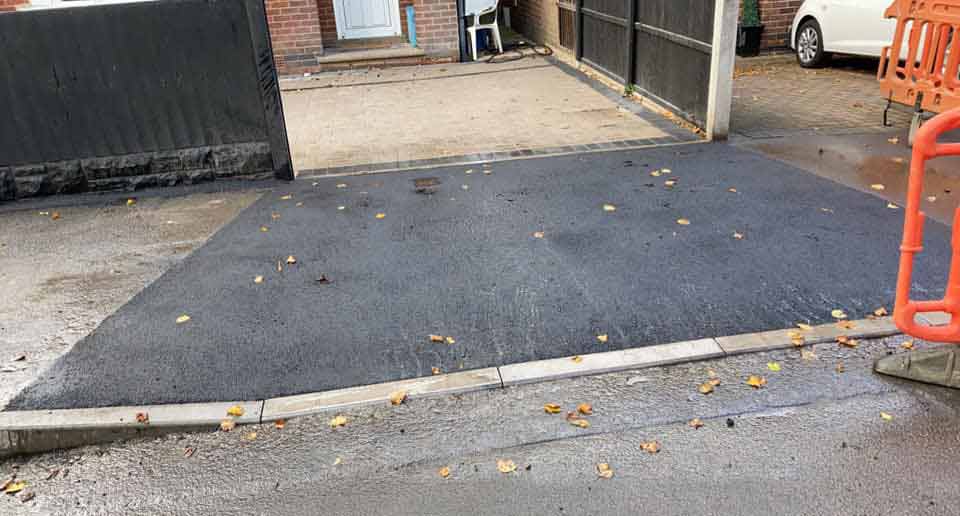Kerb ramps, or driveway curb ramps, are fixtures that are designed to facilitate the passage of wheeled vehicles along a street or driveway. They are typically used to provide access to driveways and other areas, and can be constructed from a variety of materials.
The legality of installing and using kerb ramps in the UK is subject to certain regulations and guidelines, as well as certain costs and benefits. This article will explore the legal implications of kerb ramps in the UK, including the types, installation process, regulations, costs, and benefits.
Definition and Types
In the United Kingdom, the installation of certain types of curb structures is regulated by law. A kerb ramp is one such structure, typically installed to improve accessibility and safety for pedestrians, cyclists, and wheelchair users. Most kerb ramps are made of concrete, but this can vary depending on the type, size, and pitch of the ramp needed.
The ramp should have features such as a non-slip surface, drainage channels, and be designed to meet local accessibility standards. Additionally, the material used should be durable, able to withstand regular use and weather.
Proper maintenance and repair of the kerb ramp is also necessary to ensure its continued use.
The installation process must be carefully considered and planned for in order to ensure the kerb ramp is constructed correctly and safely. It is essential that the kerb ramp is installed in accordance with local regulations and building codes.
Additionally, it is important to identify the right type of kerb ramp for the specific site location and to make sure that the ramp is visible and easily accessible.

Installation Process
Installing a driveway curb can be a complex process, with estimates suggesting it can take an average of four to six hours to complete. Proper preparation is essential to ensure the curb ramp is installed correctly and safely.
It is important to have the correct tools for the job, such as a saw, hammer, chisel, spirit level, tape measure, and suitable cement. Common mistakes made during installation include using the wrong type of cement, not using enough cement, not allowing enough time for the cement to set, or not levelling the curb ramp correctly.
To ensure long-term safety and performance, it is important to maintain the curb ramp regularly. This can include checking for any signs of wear or damage and making any necessary repairs. It is also essential to take safety precautions while installing a curb ramp, such as wearing protective clothing and eye protection, and following any instructions provided in the installation guide.
By taking the necessary steps during installation, it is possible to ensure the curb ramp is built correctly and safely.
Once the installation process is completed, it is necessary to check that the curb ramp meets all necessary regulations and guidelines.
Regulations and Guidelines
Ensuring the curb ramp meets all necessary regulations and guidelines is essential for its safe and correct usage. The enforcement of these regulations and guidelines in the UK is applied at a local authority level. This means that every local authority has their own set of rules and regulations regarding the installation of curb ramps. These rules and regulations must meet both the national accessibility standards and the local authority’s requirements for road safety.
The regulations and guidelines regarding kerb ramps in the UK include:
- Ensuring the ramps are installed in accordance with local authority requirements.
- Ensuring the ramps are up to national accessibility standards.
- Ensuring the ramps are installed according to the manufacturer’s instructions.
- Ensuring the ramps are installed in a location that does not impede the flow of traffic.
- Ensuring the ramps are regularly inspected and maintained to ensure their continued safety.
The importance of adhering to the regulations and guidelines for kerb ramps cannot be overstated, as failure to comply with them can lead to serious injury or even death. By understanding and following the regulations and guidelines, users can ensure their safety and that of others. From here, we can move to discuss the costs and benefits of installing kerb ramps.
Costs and Benefits
The installation of curb ramps can have a variety of costs and benefits that are important to consider before making a decision.
From a pros and cons standpoint, kerb ramps can improve accessibility and make it easier for people to navigate the street.
However, installing kerb ramps can be expensive and require a substantial economic investment.
It is important to consider the environmental impact of these ramps, such as the potential for excess runoff water.
An economic analysis is also necessary to determine if the installation of these ramps will be cost effective.
Ultimately, reviewing the accessibility impact, economic analysis, and environmental impact of installing kerb ramps is essential to ensure that the decision to install them is an informed and beneficial one.
This evaluation of costs and benefits can help to inform the decision on whether or not to proceed with installing kerb ramps in the UK.
Frequently Asked Questions
Understanding the implications of installing kerb ramps can be a complex decision, and it is important to consider all aspects involved to make an informed choice. Common issues when installing kerb ramps include:
- Local regulations: in the UK, kerb ramps are legal, but may require permission from the local authority.
- Maintenance: kerb ramps should be regularly checked for damage, and any repairs should be undertaken immediately.
- Safety precautions: kerb ramps should be fitted with appropriate safety features such as signs and markings.
- User experience: kerb ramps should be designed to ensure a smooth transition for wheeled vehicles.
When considering installing kerb ramps, it is important to consider all of these aspects in order to ensure a safe and efficient user experience. In addition, regular maintenance and checks should be carried out to ensure that the kerb ramps are in good condition and fit for purpose. Can I Legally Park on a Grass Verge?
Frequently Asked Questions
Are kerb ramps suitable for all types of vehicles?
The use of kerb ramps for all types of vehicles is a complicated subject, as there are various safety compliance, ramp installation, disability access, and size requirements.
While kerb ramps provide a practical solution to the issue of vehicle access, it is important to remember that they must be installed in a way that is compliant with the appropriate safety standards. This is especially true for vehicles that are larger than normal, as installation and size requirements become more stringent.
Furthermore, for those who require disability access, kerb ramps must also be installed in a way that is compliant with the relevant regulations.
Ultimately, kerb ramps can help to improve access for all types of vehicles, but it is important to ensure that safety compliance, ramp installation, disability access, and size requirements are all taken into consideration.
Is there a maximum angle of inclination for a kerb ramp?
Kerb ramps, also known as curb ramps, are an important component of disability access and infrastructure that must be designed, installed, and maintained according to specific standards.
The installation standards for kerb ramps vary depending on the location, but generally require that the ramp has a maximum angle of inclination of 1:14 with handrails on both sides.
The maintenance requirements for kerb ramps include regular inspections to check for any wear and tear, as well as ensuring that all slopes, handrails, and edges are safe and secure.
Additionally, the safety guidelines for using kerb ramps require people to use caution when entering and exiting them.
Overall, kerb ramps are a critical part of disability access infrastructure, and must be installed and maintained according to the installation standards, maintenance requirements, and safety guidelines.
Are there any legal restrictions on the materials used for kerb ramps?
The materials used for kerb ramps are subject to legal restrictions, as they must adhere to certain safety standards and installation methods.
The slope requirements of a kerb ramp must be within a certain range to ensure a smooth access for users.
The materials used to construct a kerb ramp must be of sufficient strength and durability to ensure that the ramp can withstand the weight of vehicles and pedestrians, and must be properly installed to comply with the necessary safety standards.
Furthermore, these materials must be of sufficient quality to provide a smooth and even surface for users to traverse.
Proper installation and use of the materials used for kerb ramps will ensure a safe and smooth access for users while adhering to legal restrictions.
Are kerb ramps available for purchase?
Installing kerb ramps has become increasingly popular as a means of providing safe access from a driveway to a roadway or sidewalk.
When purchasing a kerb ramp, it is important to consider factors such as safety regulations, ramp design, and environmental impact.
Safety regulations vary by region, and it is best to consult with local authorities to ensure the ramp is in compliance.
The design of the ramp should be based on the specific needs of the user; it should be easy to access and use.
Additionally, the environmental impact of the ramp should be taken into consideration, as rubber ramps can create less air and water pollution than traditional concrete ramps.
Overall, there are many kerb ramps available for purchase that can provide safe access for those with limited mobility.

Is there a minimum width requirement for a kerb ramp?
Creating a kerb ramp that meets accessibility needs requires careful consideration of design elements, visual guidelines and building regulations. It is important to ensure that the ramp is wide enough to ensure safe and easy passage for wheelchairs, trolleys and other mobility aids.
The minimum width requirement for a kerb ramp is typically 1.2 metres, although local regulations may dictate a larger width. This width must be maintained throughout the entire length of the ramp and should be clearly marked by visual cues.
Installing a kerb ramp that does not meet the minimum width requirement could jeopardise the safety of users and could lead to further legal complications.
Conclusion
The use of kerb ramps in the UK is regulated by a range of laws and regulations that aim to ensure the safety and convenience of pedestrians.
The installation process is straightforward, but it is important to be aware of the regulations and guidelines before proceeding.
The costs and benefits of installing kerb ramps should be carefully weighed, and it is recommended to seek professional advice when possible.
In conclusion, kerb ramps in the UK provide a safe and cost-effective means of improving accessibility for pedestrians, and it is important to ensure that all relevant regulations and guidelines are observed.
Call us to get a price quote on a drop-kerb. Contact us today on 07595 510190 to receive a free quote or visit our website.



